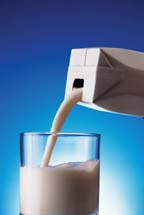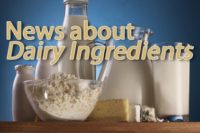
Many of today's protein beverages have customized amino acid profiles, making it easier to incorporate protein amounts higher than those found in liquid cows milk while also achieving certain sensory quality. These protein sources could be from whey protein concentrate (WPC), whey protein isolate (WPI), skim milk powder (SMP), milk protein concentrate (MPC), milk protein isolate (MPI) and caseinate (sodium or calcium). Soy protein may also be used in high-protein beverages when the protein is lower than 4.5%.
All types of beverage manufacturers are entering the high-protein market with complex ready-to-drink formulations; however, stabilizing these proteins and other ingredients can be quite challenging.
Consumers might be demanding more choices for healthier diets but they do not want to sacrifice product quality when making those choices. Lower-carbohydrate beverages face one of the most difficult challenges-that of maintaining body and mouthfeel when carb-counting solids are removed. Physical stability becomes a concern, as the removal of sugar and other solids significantly alters product dynamics such as pH and mineral balance, resulting in problems such as sedimentation and separation control.
Specially designed stabilizers have been able to successfully maintain insoluble components, uni-formly suspending them for the length of the beverage's shelflife. Two examples of such stabilizers are based on carrageenan and/or Avicel® microcrystalline cellulose (cellulose gel). The benefits offered by these stabilizers are prevention of serum/phase separation, and the stabilization of existing emulsions to minimize fat/oil separation.
Carrageenan is a complex carbohydrate extracted from red seaweed and provides stability in beverages via two means. The first is through interaction with milk protein, which can form very weak thixotropic gels at low concentrations. The second is through water binding and increasing the viscosity of the fluid phase. Both systems offer suspension of insoluble solids.
The interaction of carrageenan with casein allows for very low use levels of carrageenan in dairy beverages-200-500 ppm. At low concentrations below the gelation temperatures of various types of carrageenan, weak gels are formed that flow easily when poured; yet will "re-heal" to uniformly suspend insoluble solids when allowed to set quiescently.

Microcrystalline cellulose is an insoluble hydrocolloid that is derived from cellulose typically found in fruits and vegetables. During UHT processing, microcrystalline cellulose forms a thixotropic three-dimensional network that provides suspension of heavy particulates, without gelling or inhibiting flow. When properly dispersed, it sets up at the oil-water interface of the system to physically prevent oil globules from coalescing and forming the "creaming" layer commonly associated with unstable beverages. This defect can typically occur during processing where homogenization or emulsification systems are insufficient. However, the microcrystalline cellulose network is not weakened by temperature, as is the case with soluble hydrocolloids.
In low-carb beverages systems, one could improve on the quality and cost parameters by replacing sugar and high-fructose corn syrup with microcrystalline cellulose while maintaining the texture and rheological properties of typical full-sugar solids system. These benefits impart creaminess and added body through management of increased water, which is critical in beverages formulated with reduced solids.
Manufacturers and retailers are drawn to the flexibility of shelf-stable aseptic packaging. However, the conversion from powdered mix to ready-to-drink format may be quite complicated depending on the complexity of the formulation, the solids content and the length of desired shelflife. The entry into ready-to-drink nutritional high-protein beverages without any prior experience in beverages increases the challenges.
